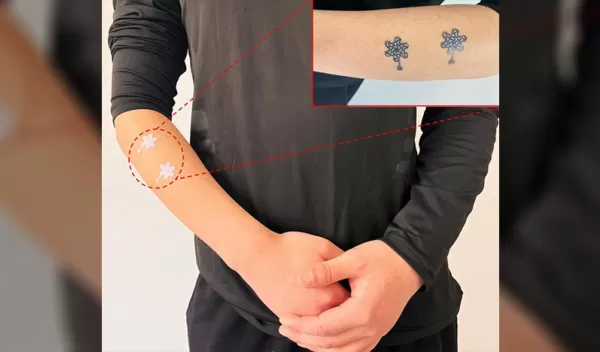
Low-cost, waterproof sensors may create new possibilities for monitoring health
A Penn State-led team of researchers has literally put pencil to paper to create an accessible, affordable, waterproof and wearable sensor to monitor multiple vital signs. The team published the details of the pencil-on-paper sensor in Chemical Engineering Journal. The research was supported in part by two grants from the U.S. National Science Foundation.
The team had previously designed a pencil-on-paper sensor that could be used in "smart diapers" to detect wetness. That sensor, however, was not hydrophobic, so while it was useful in detecting moisture, it could not be used to accurately monitor other health variables where moisture might interfere with the sensing and the results.
"In this case, we are looking to measure gas molecules, temperature and electrical physiological signals," said Penn State co-corresponding author Huanyu "Larry" Cheng. "If we get interference from the moisture or rapid humidity, the signal and mechanical robustness will be compromised. That's why we designed a superhydrophobic coating, making the sensor practically waterproof."
The researchers used a silica hydrophobic coating, which had been used for other sensors, but never for the pencil-on-paper sensors. These sensors were also designed to be stretchable, making it possible to wear on the skin.
In addition to capturing temperature and gas molecules, the sensors could capture electrical physiological action to monitor muscular motion, cardiovascular activity and brain signals. The researchers said that the device has the potential not just for sensing but also for stimulation — for example, the sensor could administer thermal therapy by sending a current to the skin.
Cheng said that the sensor's affordability, accessibility, and versatility — in terms of the scope of vital signs it could measure — may make it useful for public health applications.
